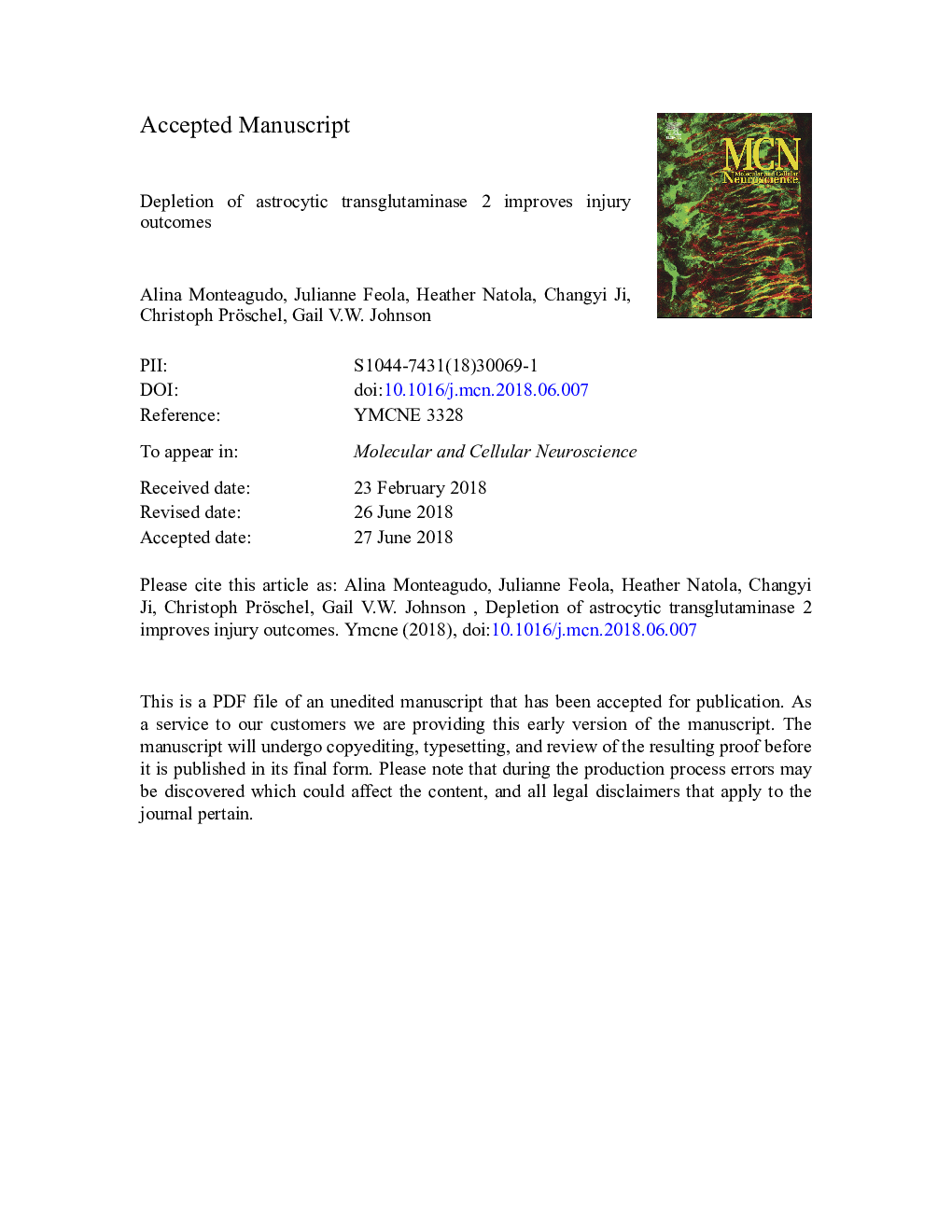| کد مقاله | کد نشریه | سال انتشار | مقاله انگلیسی | نسخه تمام متن |
|---|---|---|---|---|
| 9954518 | 1551115 | 2018 | 29 صفحه PDF | دانلود رایگان |
عنوان انگلیسی مقاله ISI
Depletion of astrocytic transglutaminase 2 improves injury outcomes
ترجمه فارسی عنوان
تخریب ترانس گلوتامیناز 2 آستروسیتیک باعث بهبود پیامدهای صدمه می شود
دانلود مقاله + سفارش ترجمه
دانلود مقاله ISI انگلیسی
رایگان برای ایرانیان
کلمات کلیدی
موضوعات مرتبط
علوم زیستی و بیوفناوری
بیوشیمی، ژنتیک و زیست شناسی مولکولی
بیولوژی سلول
چکیده انگلیسی
Astrocytes play an indispensable role in maintaining a healthy, functional neural network in the central nervous system (CNS). A primary function of CNS astrocytes is to support the survival and function of neurons. In response to injury, astrocytes take on a reactive phenotype, which alters their molecular functions. Reactive astrocytes have been reported to be both beneficial and harmful to the CNS recovery process subsequent to injury. Understanding the molecular processes and regulatory proteins that determine the extent to which an astrocyte hinders or supports neuronal survival is important within the context of CNS repair. One protein that plays a role in modulating cellular survival is transglutaminase 2 (TG2). Global deletion of TG2 results in beneficial outcomes subsequent to in vivo ischemic brain injury. Ex vivo studies have also implicated TG2 as a negative regulator of astrocyte viability subsequent to injury. In this study we show that knocking down TG2 in astrocytes significantly increases their ability to protect neurons from oxygen glucose deprivation (OGD)/reperfusion injury. To begin to understand how deletion of TG2 in astrocytes improves their ability to protect neurons from injury, we performed transcriptome analysis of wild type and TG2â/â astrocytes. TG2 deletion resulted in alterations in genes involved in extracellular matrix remodeling, cell adhesion and axon growth/guidance. In addition, the majority of genes that showed increases in the TG2â/â astrocytes had predicted cJun/AP-1 binding motifs in their promoters. Furthermore, phospho-cJun levels were robustly elevated in TG2â/â astrocytes, a finding which was consistent with the increase in expression of AP-1 responsive genes. These in vitro data were subsequently extended into an in vivo model to determine whether the absence of astrocytic TG2 improves outcomes after CNS injury. Our results show that, following a spinal cord injury, scar formation is significantly attenuated in mice with astrocyte-specific TG2 deletion compared to mice expressing normal TG2 levels. Taken together, these data indicate that TG2 plays a pivotal role in mediating reactive astrocyte properties following CNS injury. Further, the data suggest that limiting the AP-1 mediated pro-survival injury response may be a contributing factor to that the detrimental effects of astrocytic TG2.
ناشر
Database: Elsevier - ScienceDirect (ساینس دایرکت)
Journal: Molecular and Cellular Neuroscience - Volume 92, October 2018, Pages 128-136
Journal: Molecular and Cellular Neuroscience - Volume 92, October 2018, Pages 128-136
نویسندگان
Alina Monteagudo, Julianne Feola, Heather Natola, Changyi Ji, Christoph Pröschel, Gail V.W. Johnson,
